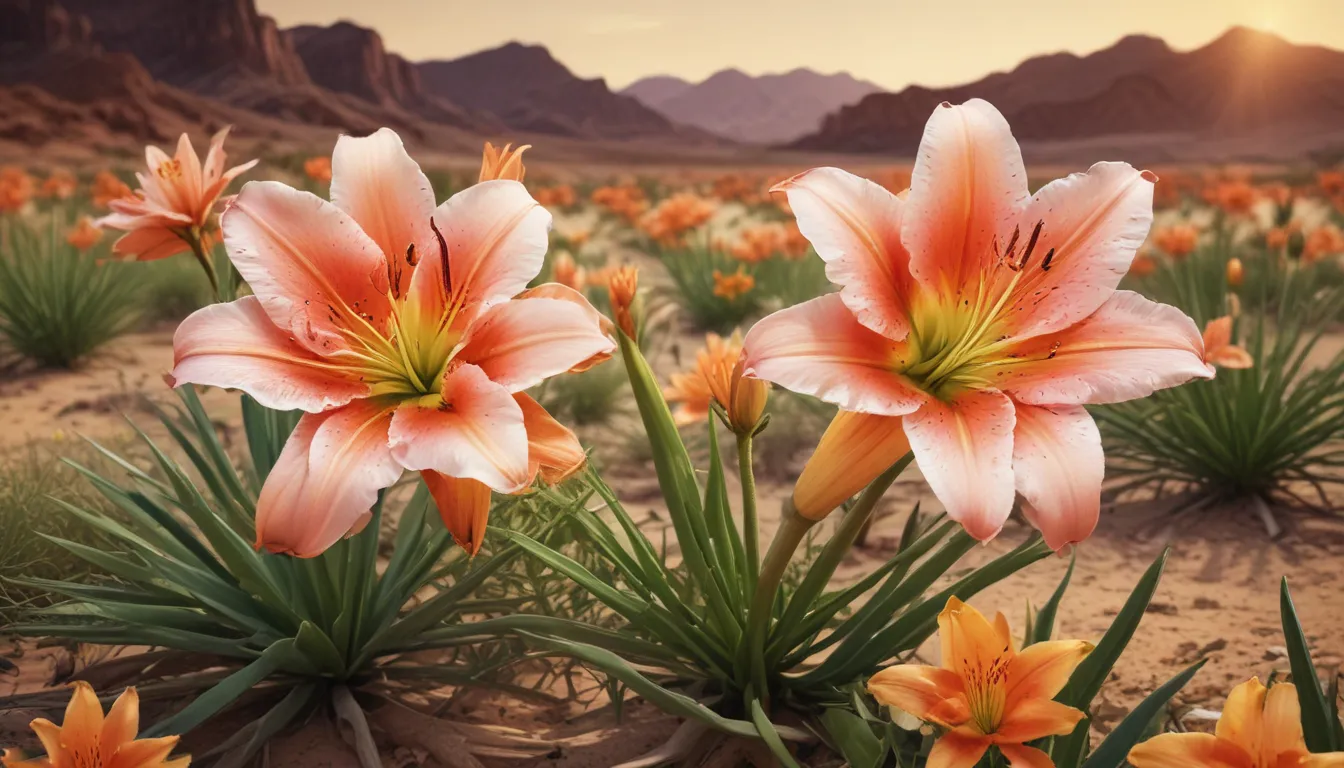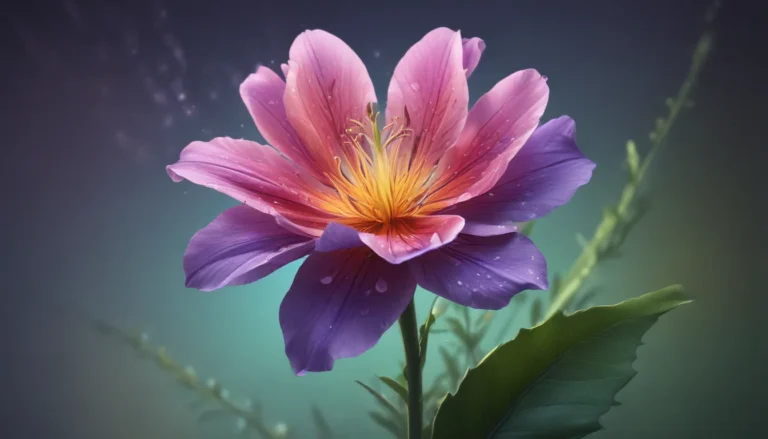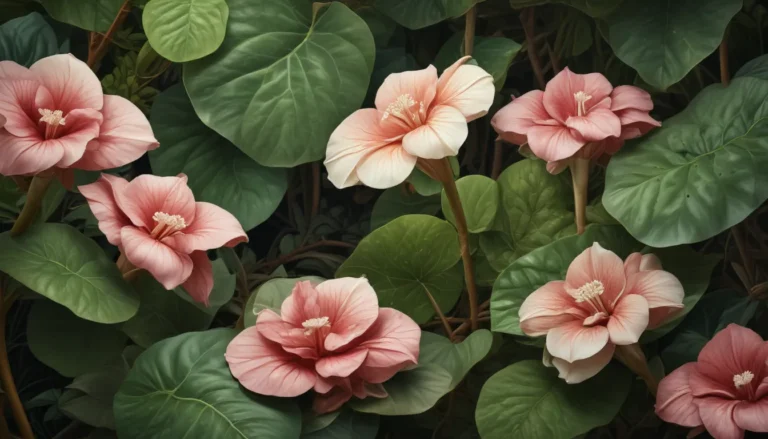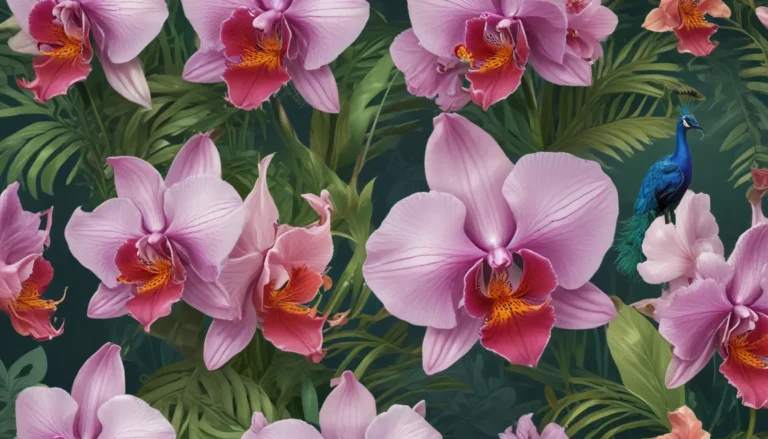The pictures we use in our articles might not show exactly what the words say. We choose these pictures to make you interested in reading more. The pictures work together with the words but don’t take their place. The words still tell you the important facts.
The desert lily, scientifically known as Hesperocallis undulata, is a resilient and beautiful plant that thrives in the arid regions of the southwestern United States and northwestern Mexico. Its remarkable adaptations to the harsh desert environment make it a captivating subject for plant enthusiasts and nature lovers alike. From its unique physical characteristics to its ecological significance, the desert lily holds a wealth of intriguing facts waiting to be explored. Whether you're a botany enthusiast, a desert ecosystem aficionado, or simply curious about the wonders of nature, these facts are sure to deepen your appreciation for the remarkable desert lily. Let's embark on a journey to uncover the secrets and wonders of this remarkable plant that thrives in one of the harshest environments on Earth.
Discovering the Desert Lily
- Desert lilies, also known as Ajo lilies, are resilient plants that thrive in the harsh conditions of the American Southwest, symbolizing hope and beauty in the desert landscape.
- These captivating flowers, with their enchanting fragrance and enduring allure, play a vital role in the desert ecosystem, providing sustenance for wildlife and inspiring awe in nature enthusiasts.
Ajo: The Heart of Desert Lily Country
- Desert lilies are commonly found in the Sonoran Desert, particularly in the vicinity of Ajo, Arizona, where they paint the desert floor with their vibrant blooms.
- Ajo, Arizona, proudly embraces the desert lily as its official flower, recognizing the plant's significance and beauty in the region's ecosystem.
Resilience in the Face of Adversity
- Desert lilies have adapted to thrive in the harsh desert environment, showcasing their resilience in the face of extreme temperatures and arid conditions.
- These hardy plants can survive in extreme conditions, enduring both scorching heat and bitter cold.
Cultural and Historical Significance
- Native American tribes such as the Tohono O’odham have historically utilized the bulbs of desert lilies as a food source, employing traditional methods to harvest and prepare them.
- Desert lilies hold cultural significance in the folklore and traditions of Southwest Native American tribes, with stories and traditions woven around their resilience and beauty.
Botanical Marvels
- Belonging to the Amaryllidaceae family, desert lilies share botanical ties with the agave plant, showcasing their botanical significance in the desert ecosystem.
- The botanical name of the desert lily, Hesperocallis undulata, reflects its enchanting appearance and Western origins, paying homage to its natural allure and undulating petals.
Blooming Beauties
- Following periods of substantial rainfall, the desert lilies burst into bloom, creating a breathtaking spectacle as the arid terrain is adorned with their delicate, white flowers.
- The alluring scent of desert lilies permeates the desert air, adding a touch of sweetness to the rugged landscape during their blooming period.
Nature’s Pharmacy
- Indigenous communities have historically utilized the bulbs of desert lilies for medicinal applications, harnessing their natural properties for various health remedies.
- The desert lily's capacity to store water in its bulbs serves as a vital adaptation, allowing the plant to endure prolonged periods of drought in the arid desert environment.
Ecological Champions
- These resilient plants contribute to the desert ecosystem by offering sustenance for pollinators and wildlife, playing a vital role in the intricate web of desert life.
- The blooming of desert lilies serves as a symbol of renewal and hope in the desert landscape, signifying the resilience and beauty that can arise from the harshest of environments.
Artistic Inspirations
- The captivating allure of desert lilies has inspired artists, writers, and photographers, who have sought to immortalize their beauty in various creative expressions.
- Desert lilies have become a popular attraction for nature enthusiasts and botanists, drawing visitors to the desert regions where they bloom.
Guardians of the Desert
- Scientific research and conservation initiatives have been dedicated to studying and safeguarding the natural habitats of desert lilies, recognizing their ecological significance.
- The presence of desert lilies in the harsh desert environment stands as a testament to the enduring beauty and resilience of nature, showcasing the remarkable adaptations of these captivating plants.
Embracing Nature’s Resilience
Desert lilies, with their remarkable adaptations and enduring allure, stand as a testament to the remarkable resilience and beauty that can flourish in the harshest of environments. Embracing their role as a symbol of hope and renewal, these captivating flowers continue to captivate the hearts of all who encounter them in the arid landscapes of the American Southwest.
Conclusion
In conclusion, the desert lily is a remarkable plant with unique adaptations that allow it to thrive in harsh desert environments. Its striking appearance and resilience make it a fascinating subject for nature enthusiasts and botanists alike. By understanding the remarkable features and life cycle of the desert lily, we gain a deeper appreciation for the diversity and ingenuity of plant life in arid regions. As we continue to explore and study these incredible organisms, we uncover valuable insights that can inform conservation efforts and inspire awe for the natural world.
FAQs
What are the main adaptations of the desert lily?
The desert lily has evolved several adaptations to survive in arid environments, including a bulbous underground storage organ to store water and nutrients, narrow leaves to reduce water loss through transpiration, and a waxy coating on the leaves to minimize moisture evaporation.
Where can the desert lily be found?
The desert lily is primarily found in the deserts of the southwestern United States and northwestern Mexico, where it thrives in sandy or gravelly soils and receives minimal rainfall. It is known for its striking blooms that emerge after periods of sufficient rainfall.






